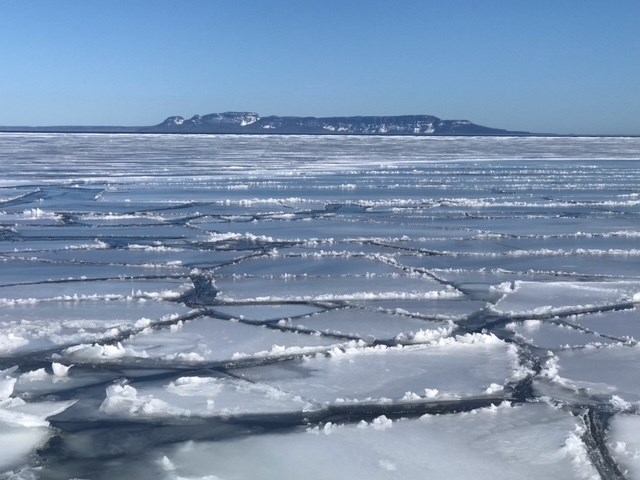THUNDER BAY — When Craig McDonald peers out at Lake Superior from his Mink Bay home, a short drive from Thunder Bay, he rarely sees ice.
And on the occasion that he does spot a sheet glimmering in the distance, it's usually not around for very long.
"I saw some patches (Thursday) morning, but they've blown away now," McDonald said by early afternoon the same day.
As the end of what has been a mostly mild winter nears, few would be surprised to learn that ice cover on the Great Lakes is in short supply.
Researchers at the University of Michigan have nevertheless confirmed it — the amount of open water on the Great Lakes hasn't been seen like this in February in 50 years.
Less than three per cent of the lakes' surface area is frozen, a "historically" low coverage area, the university said this week.
At the height of a normal winter, 40 per cent of the combined surface area of all five Great Lakes is covered in ice.
According to lakes and oceans scientist Ayumi Fujisaki-Manome, what people are currently observing on the Great Lakes is consistent with what's been happening for quite a long time — despite the occasional cold winter that makes it seem like everything is normal.
McDonald recalls the winter of 2019 when ice near his property stayed around long enough to entice ice-fishers to set out on snowmobiles.
Currently, Lake Superior ice is only visible in bays that are somewhat sheltered.
"If you look over the last 50 years, you see a trend of (ice) decline," Fujisaki-Manome, who is based in Ann Arbor, Mich., said on Thursday.
The central location of the Great Lakes causes them to receive a variety of air masses that can influence the amount of winter ice, Fujisaki-Manome said.
This winter, ice development was curtailed by a combination of factors: a general warming climate, air-pressure fluctuations over the North Atlantic Ocean and an El Nino effect — warm air blowing north from the Pacific Ocean.
Still, anomalies do occur. During parts of the 2014 winter, Lake Superior was completely frozen over. Massive ice formations built up on its coastline, as Arctic air penetrated deep into southern Ontario and parts of the U.S. for about two months.
What's happening to ice on the Great Lakes in general "remains an active area of research," Fujisaki-Manome said.
If long periods of open water become the norm, she said, then people who live near the Great Lakes will experience more severe snowstorms, shoreline erosion and flooding.
"We can say with confidence that stable ice helps protect shorelines, Fujisaki-Manome said.
McDonald, meanwhile, said he's not immediately concerned about erosion — his home sits about 50 metres from shore.
But he knows all about lake-effect snow.
"Even in April, you can get a pretty big storm," he said.
The Chronicle-Journal
